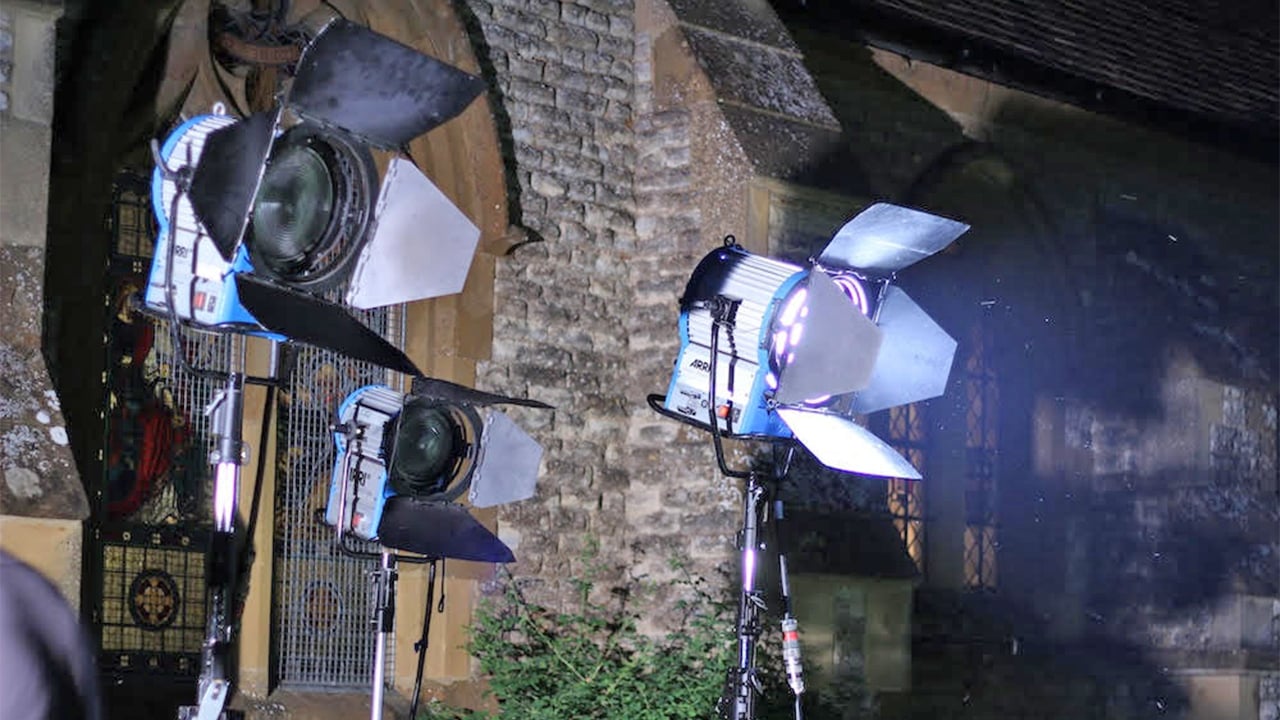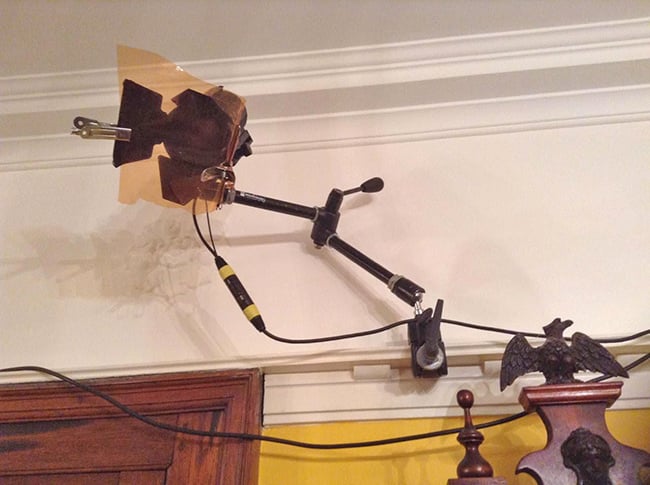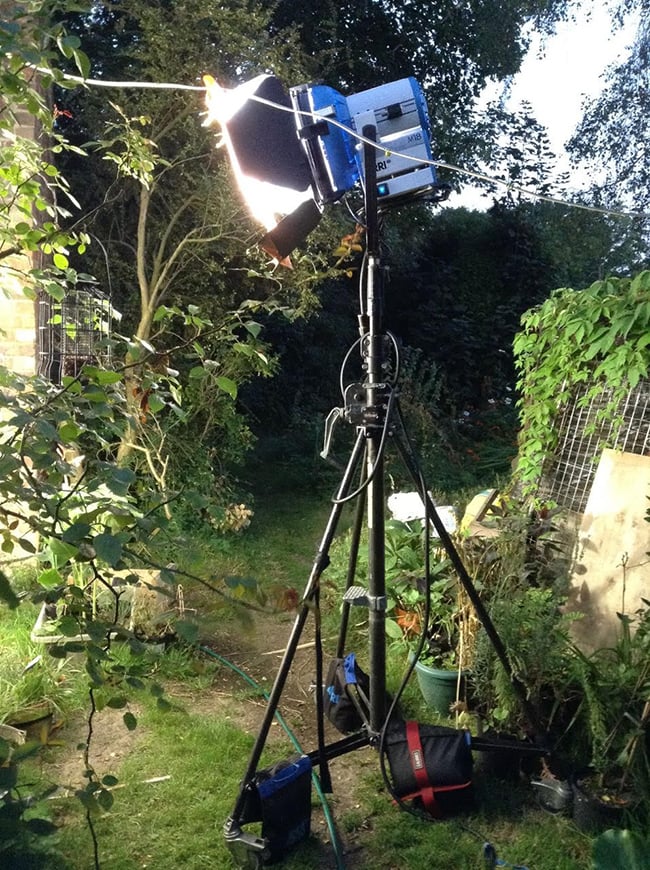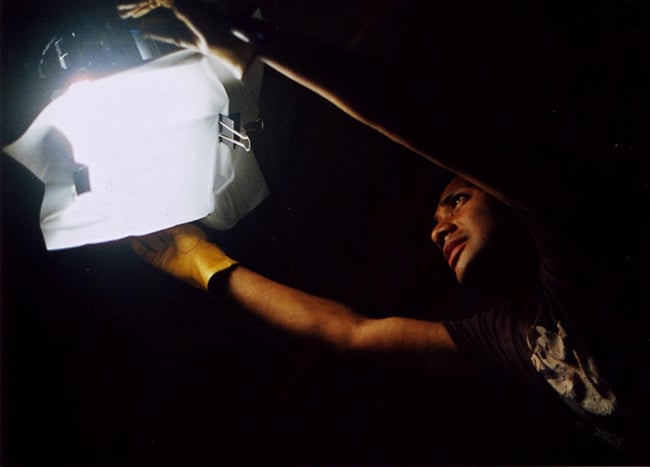
Replay: The gaffer is one of the unsung heros of the filmset. Finding a good one can make the difference between a nightmare or a dream shoot. Here's our guide to doing it without accidentally giving yourself a hairstyle like Albert Einstein.
I have come to rely on my gaffer as both an expert on electrical safety and a talented creative with a keen eye. However, when I was starting out, working on micro-budget productions, I often had to act as my own gaffer. While there is no substitute for an experienced person in this role, it is possible to get by without one if you’re using smaller lights with an ordinary domestic power supply and you know a few basic things about electricity.
Here is the minimum you need to know before you start plugging lights in.
It all starts with the equation:
P=IV
Remember that from GCSE Physics? Power = current x voltage, or watts = amps x volts. From this, we can calculate that an ordinary 13 amp domestic socket on the (approximately) 230V UK mains supply can provide about 3,000W, call it 2,800W to be safe.

Most lighting fixtures are described by their wattage, or at least the wattage is clearly marked somewhere on it. We can tell immediately that a tungsten 2K, for example, can be run off a 13A socket, or that up to three 800W lamps (3 x 800 = 2,400W) can be powered without tripping a breaker.
Most UK houses have two separate circuits (known as ring mains) for the sockets: one for upstairs and one for downstairs. Usually, these are each on a 30 or 32 amp breaker. So, although you can only draw 2,800W off one socket, you can theoretically draw almost 7KW (30 amps x 230 volts = 6,900W) total off one floor’s sockets. In practice, it is always wise to allow yourself a little extra wattage of “headroom” as some appliances will draw more current when they are first fired up.
It’s important to factor in other appliances connected to the ring main, besides lighting. Kettles and hairdryers, both power-hungry devices, are classics for tripping breakers on film locations. Make sure the cast and crew know not to plug in or turn on any appliances without checking with you first.
One of the first things you should do on arriving at a location is to find the consumer unit (fusebox) to check how many ring mains there are, where they are and what amperage of breaker they’re on. Beware that large commercial/industrial buildings may have multiple consumer units in different parts of the building. Make sure you have access to all of them so you can reset any circuit breakers you trip.
Also, ensure you have a supply of fuses in case you blow any in the plugs of your lights or extension leads. When a bulb blows due to reaching the end of its natural life, it will take the fuse with it.

Outdoor lighting often needs weatherproof C-form industrial plugs
You need to make sure your cabling is appropriate for the load you’re drawing. Extension leads can melt if you try to run too much power through them. All extension reels will have two maximum wattages written on the front of them: one for when the reel is fully wound, and one for when it’s fully unwound. When the cable is wound up it can overheat very easily, so pay attention to those quoted limits.
Professional, hired, kit is often fitted with heavy-duty cabling, signified by round blue “C-form” plugs and sockets. C-form outlets can be found in sound-stages and factories, on generators and occasionally on exterior walls of houses. They are weather resistant, so much safer for use outdoors than domestic cabling.

The associated cable comes in 16 amp and 32 amp flavours, the latter being thicker with larger plugs and sockets. A 13 to 16 amp jumper – a short adapter cable with an ordinary square UK plug (BS 1363) on one end and a 16 amp C-form socket on the other – will enable you to plug an appliance with a C-form plug into a standard domestic socket. (Some older buildings may have sockets pre-dating the BS 1363 standard, which probably means that the wiring is old and you’re safest using a generator.) Jumpers exist in every other possible direction and combination too, so it’s important you get the right ones.
Also, remember that, although a 13 to 32 amp jumper will let you physically plug, say, a 4KW HMI into a domestic wall socket, that 13 amp plug will not support a 4KW load; you’ll trip the breaker. In fact, if something has a 32 amp plug on it, then the only way to run it safely off a house is to have a qualified electrician wire a 32 amp socket into the consumer unit. Definitely don’t try to do that yourself.
In fact, if you’re in any doubt about any of the above, consult an experienced gaffer or electrician. Be safe!
We hope you found this article interesting but we cannot take responsibility for any errors or omissions,. You should always take all appropriate measures to ensure that you work safely on set.
Tags: Production


Comments